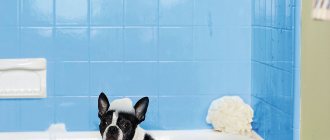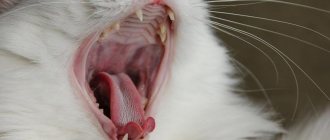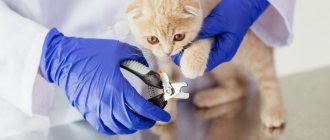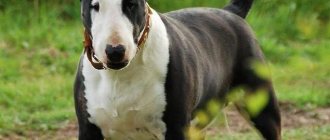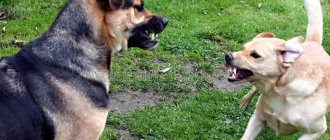Today, pet stores offer a huge variety of different skin and hair care products. However, can you wash your dog with human shampoo? There are situations when a pet needs an urgent wash, but there is no special product at hand. Will it hurt your dog if you bathe him with human shampoo once? The animal's fur and skin have a special structure, which may differ depending on the breed, so appropriate care is required.
Functions of animal wool
The entire scalp, including hair on the head, stubble, thin transparent hairs over the entire surface of the body, wool, whiskers - is not just a useless rudiment left over in the process of evolution, but an integral system that performs a number of functions:
- Immunomodulatory. Substances, liquids, poisons, when they come into contact with the skin, come into close contact with the hairs, which neutralize the infection and avoid serious consequences.
- Thermoregulating. Hair not only acts as a “fur coat”, warming the dog’s body with its mass, but also removes heat directly through the hair stems. After all, dogs don’t sweat like people; most of the liquid evaporates from the surface of their tongue, which is why they often have it sticking out.
- Through the whiskers, the dog senses the temperature of the food, which allows it not to get burned on hot dishes .
- Dogs with short, hard, bristly hair have a different skin structure , denser and stronger, which protects it from damage.
When should you bathe?
The beauty of dog washing is that it is not necessary. They do not sweat like humans, and their fur is self-cleaning. Pets are bathed only in 3 cases:
- When the animal is very dirty or has rolled around in something foul-smelling.
This usually affects hunting dogs, who cannot pass by the “fragrant” corpse of a cat and other “lovely” odors. - For medical reasons.
A strong dog smell, dandruff, and increased oil production indicate skin diseases. In this case, the veterinarian prescribes therapeutic washing with special means. This also includes bathing for the purpose of antiparasitic treatment. - As a cosmetic treatment.
Show animals are bathed before competition. This is one of the grooming procedures that is needed to keep the coat shiny and looking neat. Also, be sure to wash the dog after cutting or trimming to remove the cut hairs - otherwise they will prick and irritate the skin.
Another reason for bathing is the personal preference of the owner. He himself determines when to wash the dog, based on the degree of soiling of the coat. Most often, bath days are given to pets who live in an apartment and like to sleep with their owner or lie on the sofa.
In all other cases, the dog does not need to be bathed. It is enough just to wash or wipe dirty areas - paws after a walk or face after eating.
How often are “bath procedures” recommended?
The optimal frequency is once a month. But how many times to wash a particular dog is determined individually. Pets are bathed several times a month (almost every week), and once every 3 or even 6 months. It depends on the characteristics of the coat, breed and conditions of detention.
The least likely “bath” is needed:
- domestic decorative dogs that rarely go outside and relieve themselves in a tray or diaper;
- smooth-haired breeds - their coat gets dirty a little and is easy to clean during combing;
- dogs with thick undercoat that can be kept in an enclosure - they also “self-clean”, and frequent washing spoils the coat and disrupts the functioning of the sebaceous glands.
Animals need washing more often:
- with long thick hair;
- white and light colors;
- decorative breeds whose fur is similar to human hair;
- who participate in exhibitions.
During shedding, dogs are advised to wash more often.
Pets who live in large cities need washing more than those from the countryside. Car exhaust and emissions from factories quickly pollute the fur coat and clog the sebaceous glands.
Differences from human hair
Sebaceous glands are more sensitive not only to shampoo components, but also to sunlight .
If a long-haired dog is shaved in the summer, it can get skin problems , irritation, rashes, and lose hair or lose most of its volume.
Components such as fragrances and synthetic fragrances are extremely undesirable, as they provoke skin diseases by killing the microflora in the dog’s epidermis. The citric acid in the composition acts directly on the glands, disrupting their function, causing them to produce huge amounts of sebum, as a result of which they become inflamed.
Receptors on the skin receive a signal that there is not enough fat and require more resources from the body, which affects the functioning of other systems . A shift in skin pH towards an acidic environment entails various immune reactions from scabies to hair loss.
It is also possible for “black dandruff” to appear when combing . A situation in which dirt accumulated in the sebaceous gland formed a black dot, which was torn off with a comb. As a result, the wound begins to bleed and becomes vulnerable to various types of infections.
The pH level in dogs is around 7 units, while in humans it is 4 - 5.5 units. We can conclude that dogs’ skin has a more alkaline environment , therefore shampoo and soap intended for people will not harm them, but, on the contrary, will act weaker.
IMPORTANT! Dogs' hair grows continuously, and several times a year the process of shedding occurs, as a result of which the hair is intensively renewed. During this period, the dog requires special care, nutrition and vitamin supplements so that the next layer grows full and dense.
Is it possible to wash a dog in winter?
In the cold season, it is best to bathe the animal at night, before going to bed. After water treatments, you should give your pet some time for the fur to dry completely. Usually this takes 2-3 days.
A special dry shampoo can be a good alternative to regular bathing. Its use will protect the animal from possible colds due to wet fur. Another simple way to rid an animal of pollution is a regular walk along the snowy streets. Dogs love snow and enjoy playing in it. Rub the snow on your dog, shake off the residue and quickly return to a warm room. The dirt will go away with the remaining snow.
Important! When bathing, make sure that water does not get into the animal's mouth, nose, ears and eyes.
This can cause serious illness in your pet.
Difference between special and regular shampoos
Shampoos for people contain one single active ingredient - (Sodium Laureth Sulfate) sodium lauryl sulfate or sodium dodecyl sulfate, which effectively fights dirt and fatty masses on the skin or hair. They are highly not recommended for daily use because:
- greatly increase skin sensitivity;
- over time, they destroy the protective barriers of the skin;
- disrupt the function of the sebaceous glands, causing their blockage and inflammation;
- predispose the skin to allergic reactions;
- dry the skin beyond normal, which causes peeling.
In addition to this component, flavors, dyes, and fillers , creating a mass of shampoo. They do not pose any particular harm to humans; they are rather useless.
Active ingredients
- Triclosan is an antibacterial and antimycotic substance, also included in soaps, washing powders, and antiseptics. As a rule, it is used in cheap shampoos, as it has too powerful a cleansing effect and can cause skin irritation and allergies.
- Ammonium sulfoethoxylate is a milder drug that does not cause allergies. But in the long term it also dries out the skin and hair.
- Expensive shampoos are based on a balanced acid-base mixture , which is ideal for the skin and fur of animals.
Additives include various herbal extracts, oils and decoctions. Some cosmetic products are tested on animals, which has angered animal rights activists around the world.
This fact creates the impression that shampoos and soaps are very harmful and dangerous. In fact, it is not the product itself that is dangerous, but the initial components that are used to treat animals in huge doses.
IMPORTANT! Mammalian hair consists of a calcium shell, chitinous scales, protein compounds and a nerve ending that sends signals to the hair that it is damaged or cut.
Which to choose?
If you still bathe your dog with a product for people, then when choosing, you need to remember a few rules :
- The composition of the shampoo should be as short as possible. The fewer unnecessary components there are, the better.
- You should not unconditionally believe the labels “natural” and “natural”. Most often this is a ploy for inattentive buyers. Read the composition.
- Choose shampoos with a pH close to 7 units. (for oily hair, for restoration).
- Look for products containing calcium compounds, elastin, various plant proteins, and peptide fractions, as they can improve the condition of the hair and strengthen it.
REFERENCE! Dogs' sebaceous glands work differently than humans'. They maintain a constant amount of sebum and hair sebum, regardless of external conditions, temperature, humidity.
Children's
Shampoos for children, just like expensive ones for dogs, are based on soft ingredients, which are herbal tinctures and decoctions. Sometimes they generally consist of one component without impurities. Most likely, children's products will be useless for dogs , since they will simply “get stuck” in the hair without reaching the root. Therefore, we recommend that you abandon the idea of washing your dog with this shampoo.
How to wash a dog without water
In situations where the animal is terribly afraid of water or washing it is contraindicated (for example, your pet is sick), you can use dry shampoos. The principle of operation of this product is its ability to bind particles of dirt, shed hair and sebum. Talc is applied to the dog's coat, distributed evenly, and then thoroughly combed out, as a result it becomes clean and silky.
Washing our four-legged friends is a necessary and important procedure in caring not only for their external beauty, but also for their health. How often to subject an animal to water procedures depends on many factors: breed, age, coat length, skin condition. The main thing is to follow the necessary rules when starting to swim. Since their violations can have serious consequences for the health of a pet.
Other means
Shower gels and artificial soaps also contain sodium lauryl sulfate, but in much higher concentrations, as they are intended for hands that have a rougher texture and often come into contact with dirty surfaces.
Balms, masks, creams consist of plant extracts, oils, vitamin mixtures, and some synthetic laboratory components.
In theory, they can be used without much harm, but in practice, it is better to consult a veterinarian regarding questionable ingredients.
We also recommend reading our other articles about washing your dog with laundry or tar soap.
